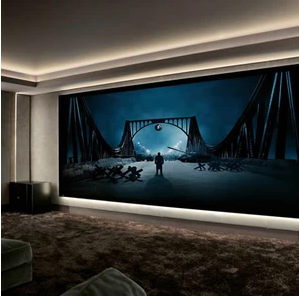Transforming Your Living Room: A Guide to Home Cinema Projectors
Home cinema projectors have revolutionized the way we experience movies, TV shows, and gaming in our living spaces. Offering larger-than-life images and a cinematic feel, they can turn any room into a personal theater. If you’re considering upgrading your home entertainment setup with a projector, here’s a comprehensive guide to help you navigate the world of home cinema projectors.

Why Choose a Home Cinema Projector?
- Immersive Experience: Projectors provide a much larger screen size compared to traditional TVs, making you feel like you’re right in the middle of the action.
- Space-Saving: Unlike big-screen TVs, projectors can be discreetly mounted on the ceiling or wall, freeing up valuable floor space.
- Versatility: They are not limited to movies alone. Enjoy sports, gaming, and even presentations on a grand scale.
Key Factors to Consider
- Resolution:
- 1080p (Full HD): Suitable for most users, providing clear and detailed images.
- 4K (Ultra HD): Ideal for those who want the highest resolution and are using the projector in a well-lit room.
- Brightness:
- Measured in lumens, higher brightness is essential for clear images, especially in rooms with ambient light.
- 2,000 – 3,000 lumens: Works well in darker rooms.
- 3,000+ lumens: Better for rooms with more light.
- Contrast Ratio:
- This measures the difference between the darkest blacks and the brightest whites.
- A higher contrast ratio delivers more vibrant and life-like images.
- Throw Distance:
- This is the distance between the projector and the screen.
- Short-Throw Projectors: Can project large images from a short distance, perfect for small spaces.
- Long-Throw Projectors: Require more space but are ideal for larger rooms.
- Lens Shift and Keystone Correction:
- Lens Shift: Allows you to adjust the image without moving the projector.
- Keystone Correction: This helps correct any distortion if the projector is at an angle.
Setting Up Your Home Cinema
- Choosing the Right Screen:
- Fixed Screens: Best for a dedicated home theater room.
- Retractable Screens: Ideal for multi-use rooms, can be rolled up when not in use.
- Painted Wall: A budget-friendly option, though not as perfect as a proper screen.
- Sound System:
- Projectors often come with basic built-in speakers, but for an immersive experience, invest in a quality sound system.
- Soundbars: Simple and space-saving.
- Surround Sound Systems: Offer the best audio experience.
- Room Environment:
- Control the lighting with blackout curtains or shades to enhance the picture quality.
- Arrange seating to ensure everyone has a good view of the screen.
- Mounting the Projector:
- Ceiling mounts keep the projector out of the way and provide a clear line of sight.
- Make sure the projector is positioned correctly to avoid any image distortion.
Top Projector Recommendations for 2024
- Epson Home Cinema 5050UB:
- 4K enhancement technology.
- High brightness and contrast ratio.
- Excellent color accuracy.
- BenQ HT3550:
- True 4K resolution.
- HDR-PRO technology.
- Cinematic color.
- Optoma UHD50X:
- 4K UHD resolution.
- High refresh rate for gaming.
- Impressive brightness.
- Sony VPL-XW7000:
- Native 4K resolution.
- High dynamic range.
- Outstanding image clarity and detail.
- LG BU50:
- 4K UHD laser projector.
- 5000 luminess.
- Versatile and user-friendly.
Conclusion
Investing in a home cinema projector is a fantastic way to elevate your home entertainment experience. By considering factors like resolution, brightness, contrast ratio, and setup requirements, you can find the perfect projector to transform your living room into a captivating cinema. Whether you’re watching the latest blockbuster, cheering for your favorite sports team, or diving into an immersive video game, a home cinema projector offers an unparalleled viewing experience.

